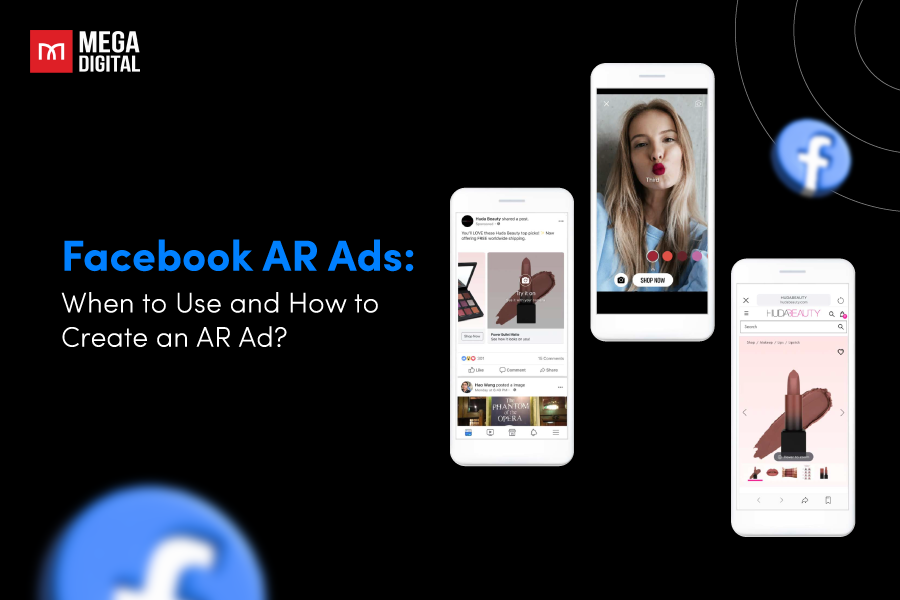Google Ads can cost your business a lot, especially if wrong people click on your ads. To avoid this, you have to understand how to use negative keywords effectively to ensure your ads reach the right audience. But to make them work well, you need to choose the right match types. In this blog post, we’ll explain in detail what Negative keywords match type is and how to use them the right way.
What is Negative keywords match type in Google Ads?
First, you need to know what exactly negative keywords are. Negative keywords in Google Ads are specific terms or phrases that advertisers exclude from their ad copy. Unlike regular keywords that trigger the display of an ad when users search for them, negative keywords prevent ads from appearing if the search query includes those terms.
Now that you have grasped the idea of negative keywords, let’s dive into Negative keywords match type.
Negative keywords match type is a keywords setting that allows you to exclude the precise keyword phrase of your ad when a search query is performed. These searches might involve extra words, and the advertisement will not be displayed as long as the keywords are part of the search in the same order.
The purpose of negative keyword match is to refine and optimize ad campaigns by excluding specific terms or phrases that are irrelevant to the products or services being promoted. This helps advertisers prevent their ads from appearing in search results or content that is unrelated or likely to attract an audience that is not genuinely interested.
How Negative keywords match type works?
In Google Ads, negative keywords work by instructing the system on when not to show your ads. When a user enters a search query, Google’s algorithm checks it against your selected keywords. If the search query contains terms designated as negative keywords, your ad won’t be shown, ensuring that your ads are excluded from irrelevant or unwanted searches.
For example, if you sell premium eyeglasses, you might add “cheap” as a negative keyword to avoid displaying your ad to users searching for inexpensive eyewear. This strategic use of negative keywords helps you prevent unnecessary clicks, and optimize your ad spend by ensuring your ads are shown to users more likely to convert.
Note: By default, all keyword match types, including negative match, are eligible to match to close variants. There is no way to avoid this. Therefore, your negative keywords won’t match to close variants or other expansions.
Benefits and drawbacks of Negative keywords match type
Benefits
Selecting an appropriate Negative keywords match type for your Google Ads campaign offers numerous benefits for your advertising efforts. Here are the top 4 benefits:
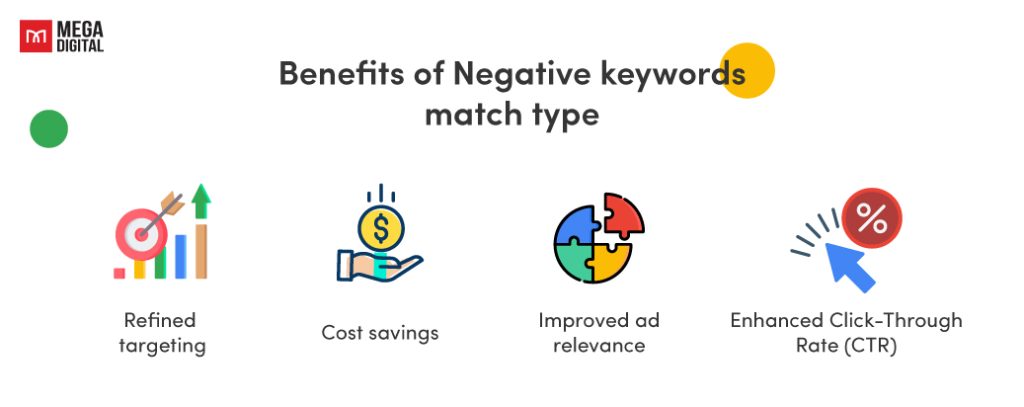
Refined targeting
Negative keywords allows for precise targeting by excluding specific terms that are not relevant to your product or service. This refinement ensures that your ads are shown to a more qualified audience, increasing the likelihood of engagement.
Cost savings
By excluding irrelevant search queries, negative keywords help prevent wasted ad spend on clicks that are unlikely to convert. This cost-saving feature enhances the efficiency of your advertising budget, directing resources towards more promising leads.
Improved ad relevance
Implementing negative keywords enhances the relevance of your ads to the user’s search intent. This not only boosts the chances of your ad being clicked but also contributes to a higher Quality Score, a crucial factor in Google Ads ranking and cost-per-click.
Enhanced Click-Through Rate (CTR)
The strategic use of negative keywords contributes to a more targeted audience, leading to a higher click-through rate. Ads are displayed to users actively interested in your offerings, resulting in increased engagement and a more effective advertising campaign.
In short, Negative keywords match type helps to enhance ad targeting, improve ad relevance, and ultimately increase the effectiveness of the advertising budget by focusing on a more qualified audience.
Drawbacks
Using negative keywords in Google Ads campaigns can be a valuable strategy, but there are also potential drawbacks to consider. If you’re not careful with your negative keyword selection, like overusing negative keywords or choosing them too broadly, you might unintentionally exclude relevant traffic. Besides, search trends do evolve, and what was once irrelevant might become relevant over time. Relying too heavily on static negative keyword lists without regular updates can lead to missed opportunities.
3 Negative keywords match types
The way you block keywords from showing on your ad matters. Just like keyword match types, there are 3 different types:
- Negative broad match
- Negative phrase match
- Negative exact match
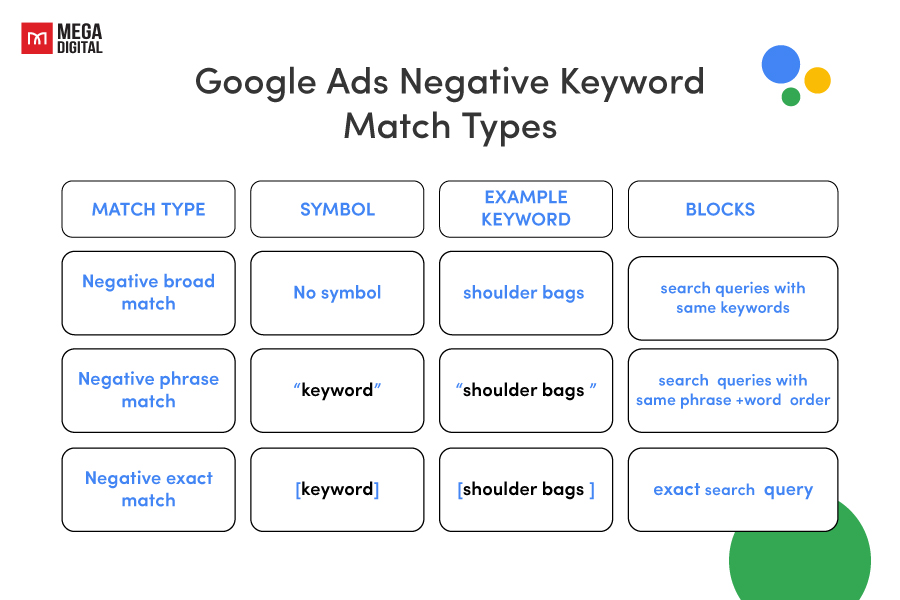
Below we’ll go deeply into each type, and provide detailed examples of how each one shows up in search results.
1. Broad match negative keywords
Negative broad match is the default setting for negative keywords. If a search query contains the negative keyword terms in any order, your ads will not show. The syntax is to simply write your chosen keywords, no need to include any special characters.
Example: If your business sells handbags, you don’t want your ads to appear for searches related to “shoulder bags”, you can just put it as a negative broad match keyword without using quotation marks or brackets.
To make it clearer, let’s check out a few more examples with the negative broad match shoulder bags.
| Search queries | Will your ad show? |
|---|---|
| shoulder bags | No |
| bags shoulder | No |
| black shoulder bags | No |
| handbags for men | Yes |
| cheap handbags | Yes |
| shoulder bag | Yes |
You might wonder how is it possible for the last scenario to happen, right? Well, we’ve said earlier that your negative keywords won’t match to close variants or other expansions. The keyword “shoulder bag” appears because “bag” is different from “bags”.
When to use: You should use this Negative keywords match type when you want to exclude a specific term while allowing variations, providing flexibility to prevent ads from showing on a broad range of related search queries.
2. Phrase match negative keywords
When you use negative phrase match keywords, your ads won’t appear if the search query contains the exact negative keyword phrase in the same order. Even if there are extra words in the query, your ads won’t show as long as the specified keywords are included in the same order. Remember to put your keywords in quotation marks.
Example: If you don’t want your ad to show for searches containing the phrase “shoulder bags” you can set it as a negative phrase match keyword.
Let’s look a few more examples with the negative phrase match “shoulder bags”
| Search queries | Will your ad show? |
|---|---|
| shoulder bags | No |
| bags shoulder | Yes |
| white shoulder bags | No |
| shoulder bag | Yes |
When to use: You should use this Negative keywords match type when you want to exclude your ads from showing for search queries containing the exact keyword phrase, even if additional words are present before or after the phrase. This match type offers a balance between specificity and flexibility.
3. Exact match negative keywords
Negative exact match is like a strict rule for your ads. If the search query exactly matches the negative keyword, and no other words are present, your ad won’t show up. It’s a way to be very precise about when you want your ad to be seen.
Example: If your keyword is [shoulder bags], your ad won’t show up when someone types “shoulder bags” exactly as you’ve set it. Other than that, your ad will appear in every other search query.
| Search queries | Will your ad show? |
|---|---|
| shoulder bags | No |
| leather shoulder bags | Yes |
| handbags | Yes |
| cheap handbags | Yes |
When to use: You should use this match type when you want to exclude your ads only for the specific search queries that match your specified keyword exactly. This match type provides the highest level of precision in excluding certain search terms.
How to add Negative keywords match type in Google Ads?
Step 1: Select the campaign you want to edit
First, you have to log in to your Google Ads account at https://ads.google.com.
Click on the “Campaigns” tab in the left-hand menu to access your campaigns.
Choose the campaign where you want to add negative keywords.
Step 2: Click on “Negative keywords” button
Once you’re in the campaign, click on the “Keywords” tab to manage your keywords.
Look for the “Negative keywords” tab. Click on it to access the area where you can add negative keywords.
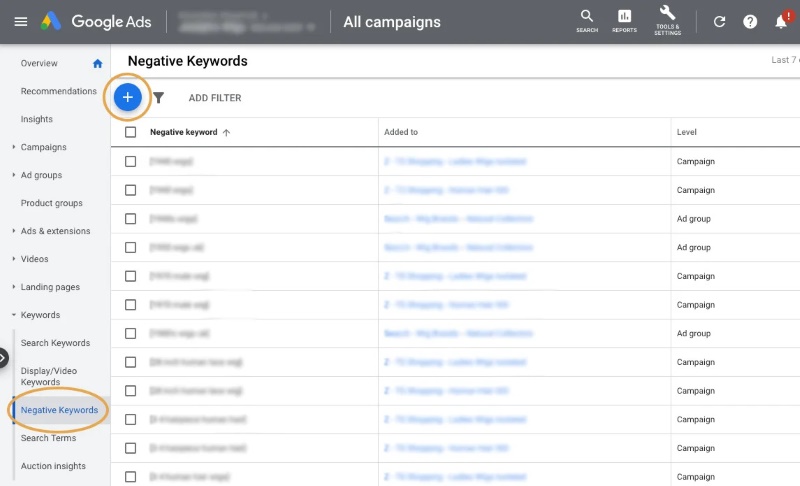
You’ll typically find an option to add negative keywords. Click the “+” button to start adding them.
Step 3: Choose the match type and edit negative keyword list
When adding negative keywords, you can specify the match type. Choose between broad, phrase, and exact match based on your preferences. Enter the keywords you want to designate as negative and save your changes.
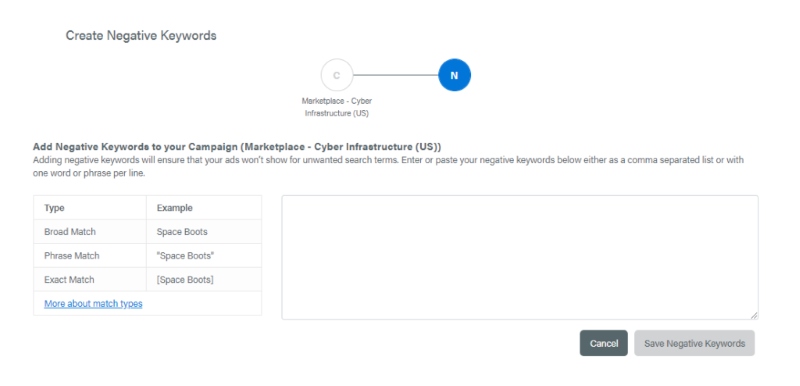
Tips on choosing the right Negative keywords match type
At Mega Digital, we have successfully implemented around 300+ Google Ads campaigns, showcasing our expertise in applying effective negative keyword strategies for our clients. One thing we can tell you for sure is that there’s no such “right” match type that does wonders in every advertising campaign. You’ll likely choose 1, or even use all 3 types depending on the situation.
Here are some pieces of advice from Mega Digital for you to choose the right match type:
- Use negative broad match for general exclusions and to prevent ads from showing for a wide range of related queries.
- Use negative phrase match when you want to exclude specific phrases to maintain more control over what queries trigger the exclusion.
- Use negative exact match when you want precise control, ensuring your ads are excluded only for the exact keyword you specify.
Wrap-up
As we draw the curtains on this exploration into Negative keywords match types, it becomes evident that these tools are not mere modifiers but indispensable instruments in the marketer’s arsenal. By strategically excluding specific terms, you carve a path for your ads to resonate with the audience that matters most. The dance between inclusion and exclusion, as orchestrated by negative keywords, defines the success and resonance of your digital campaigns.






